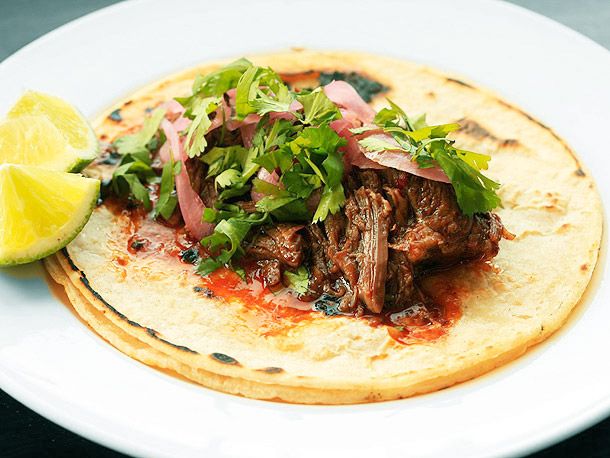How to Make Better Barbacoa
Popular on Food52
1 Comment
zora
April 25, 2012
It's not that hard to make a more traditional barbacoa de cabrito, with goat leg wrapped in banana leaves, which is head and shoulders above beef chuck in terms of deliciousness. The best place to find goat meat is at a halal butcher, and banana leaves are commonly sold at Latin and Asian markets.
Rick Bayless teaches a much more traditional method for making adobo, recados (spice paste marinades) and cooked salsas of all kinds than does Señor Alt. Roast or broil the onion, garlic, tomato, tomatillos in a hot oven until the veg are browned and then put them in the blender with toasted, soaked chiles, roasted and peeled poblano, cider vinegar, lime juice and cumin, oregano, cilantro, etc. When pureed, transfer to a saucepan and simmer for at least a half hour, stirring frequently, until thickened. When the adobo has cooled, slather the meat (let it sit for a while in the refrigerator, if possible). Lay out a sheet of heavy foil, lay rinsed banana leaves on top (I also lay on some avocado leaves, which add an anise-y flavor) then put the meat in the center, cover with more banana leaf and another sheet of foil and roll up the edges, making a sealed packet. Bake in a slow oven (225-250f.) for four or 5 hours.
Rick Bayless teaches a much more traditional method for making adobo, recados (spice paste marinades) and cooked salsas of all kinds than does Señor Alt. Roast or broil the onion, garlic, tomato, tomatillos in a hot oven until the veg are browned and then put them in the blender with toasted, soaked chiles, roasted and peeled poblano, cider vinegar, lime juice and cumin, oregano, cilantro, etc. When pureed, transfer to a saucepan and simmer for at least a half hour, stirring frequently, until thickened. When the adobo has cooled, slather the meat (let it sit for a while in the refrigerator, if possible). Lay out a sheet of heavy foil, lay rinsed banana leaves on top (I also lay on some avocado leaves, which add an anise-y flavor) then put the meat in the center, cover with more banana leaf and another sheet of foil and roll up the edges, making a sealed packet. Bake in a slow oven (225-250f.) for four or 5 hours.


See what other Food52 readers are saying.